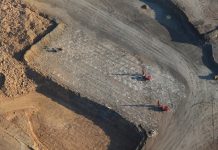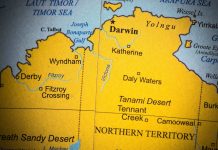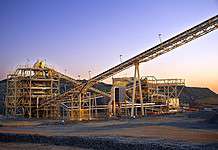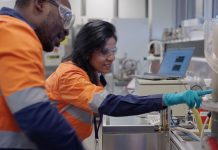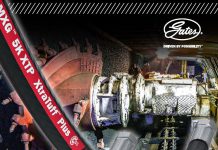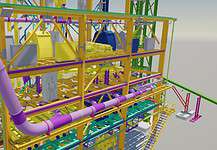WHEN it comes to measuring serious torque and horsepower, a chassis dyno doesn’t cut the mustard.
It takes a water brake engine dyno to pull down 5000lb/ft and hold that torque for accurate measurement and testing.

What is a dynamometer?
Water brake dynamometers have been around for decades and they basically work on the principle that water cannot be compressed; therefore if the engine is forced to work harder and harder driving a water pump that applies more and more resistance, in theory the dyno should be capable of stalling the engine.
As the engine works to overcome the load placed on it by the water brake, Newton’s law of equal and opposite reaction is put into practice and all that torque is also applied to a very accurate load cell.
If a given load is applied to a lever of a known length it is possible to calculate torque, and if rpm is then factored into that equation, horsepower can be calculated.
That, in the most simplistic of terms, is how an engine dyno functions.
Add modern electronic controls and the latest data logging modules and software to this platform, and the end result is a test bed capable of putting even the largest diesel engines to the test under partial or full loads, for extended periods of time if necessary.
Diesel Engines and Spares (DEAS) in Salisbury, Qld, have been rebuilding and testing diesel engines for many years – from the smallest utility motor to the largest earthmoving and mining powerplants.
The Australian Mining Review wanted a company to explain the benefits of dyno testing in the mining world and with DEAS’ years of experience and the fact that it strips, remanufactures or custom builds and then dyno tests its own engines, it was the perfect company to work with.
Naturally DEAS has a fully equipped workshop with all the necessary equipment and the qualified staff to build any engine for any customer – regardless of the size or complexity. However, it was the cell out the back with “Dyno Room” painted on the door that we were interested in.
Lurking inside that sound-proofed room is a Taylor engine dynamometer capable of testing engines up to 1850hp and 5000lbs/ft.

Why dyno test?
The reasons engines require dyno testing are many and varied, but in the mining sector the high cost of the engines and the substantial costs incurred by machine downtime are the major contributing factors.
Prime examples of high cost installations are the engines DEAS re-manufactures for remote oil drilling sites in the highlands of PNG.
These engines are flown into site at great expense, so any repair or unexpected reliability issue comes at a significant financial cost.
The same is true of engines used in power generation, marine applications and earthmoving equipment.
According to Brad from DEAS, even minor leaks or performance issues can cause expensive downtime and unplanned operational costs.
“Access to the engines, once they are installed, is normally very restricted and most of the time they are housed in contaminated environments that are not suited for engine repairs,” he said.
So, dyno testing is insurance against potentially undiscovered issues that would only appear once an engine was delivered to site, installed and run for the first time.
However, for a low percentage of the overall re-manufacturing cost, the engine is test run to its maximum specification for a period of time.
This process is to test for leaks, correct engine operation, performance (torque and horsepower), optimum operating temperatures and pressures and other custom parameters.
Depending on the requirements specified by the client, measurements of all aspects of the engine can be measured in a controlled environment.
All measurements are corrected to one of the internationally recognised standards (STP, SAE and others) for air temperature and pressure.
This allows an engine to be tested in the warmth and humidity of a Queensland summer and then be re-tested in the depths of winter; and despite the changes in air density and humidity, the correction factor means that the results of each test will be scaled and therefore comparable.
The base measurements taken while the engine is on dyno are oil pressure, oil temperature, coolant temperature, exhaust temperature, boosted air intake temperature, boost pressure, fuel temperature, fuel pressure, fuel consumption, horsepower (kW), rpm, torque (lbs/ft or Nm) and many other readings depending upon the application.
In some instances, oil samples are taken from an engine after a predetermined number of hours on dyno, running through various load cycles.
With the engine still on dyno, the oil is sent to a laboratory for analysis – a bit like a blood test for an engine.
From the type and quantities of metals and contaminants in the oil, a skilled engine builder can determine whether the engine is behaving normally during its first few hours of life, or if there is an internal problem that warrants inspection.
Once again, any inspection or repair can be carried out at DEAS or the engine builder’s workshop – a far cheaper option than sending the engine back to site, paying for labour to re-install it and then doing it all in reverse when a problem is discovered.
The cost of extra machine downtime also needs to be factored into this expensive equation.

Emissions testing
With additional sensors and data logging equipment, the dyno can also be used for very accurate emissions testing.
This is critical where an engine must meet internationally recognised emission levels before being permitted to operate in a given location.
DEAS has carried out tier certifications, underground exhaust filtration emission tests, fuel consumption tests, Lloyds marine certification tests and many more.
The resulting certification is proof that an engine meets those criteria and is fit for purpose.

Additional benefits
DEAS has also worked in conjunction with smaller companies doing their own research and development on areas such as diesel performance, next generation fuels and extended life engine projects.
The benefits of engine dyno testing extend beyond those of a simple quality assurance tool for the engine re-manufacturing industry.
As mentioned, it also assists in the continuation of advancement of the performance of diesel engines through R&D, running valuable engines in a controlled environment and utilising accurate instruments to significantly reduce the background noise in data readings to those taken in the field.
This ensures that the resultant data is credible and undisputed (some scientific papers have been published with reference to DEAS test facilities).
So, for peace of mind – get on the brake.

Source:
Diesel Engines and Spares.
(07) 3277 9295.

